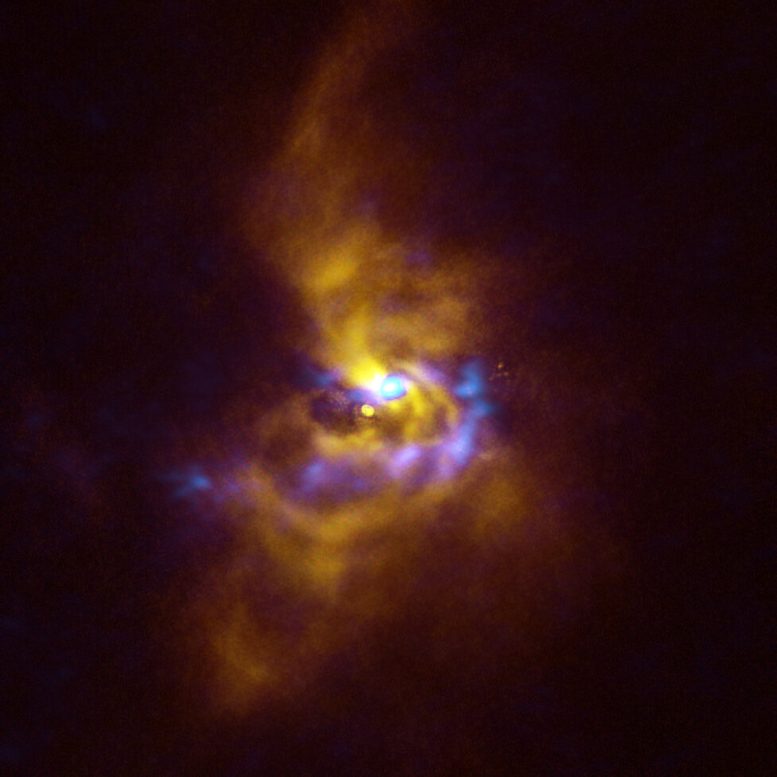
At the center of this image is the young star V960 Mon, located over 5000 light-years away in the constellation Monoceros. Dusty material with the potential to form planets surrounds the star. Credit: ESO/ALMA (ESO/NAOJ/NRAO)/Weber et al.
A spectacular new image released by the European Southern Observatory (ESO) gives us clues about how planets as massive as Jupiter could form. Using ESO’s Very Large Telescope (VLT) and the Atacama Large Millimeter/submillimeter Array (ALMA), researchers have detected large dusty clumps, close to a young star, that could collapse to create giant planets.
“This discovery is truly captivating as it marks the very first detection of clumps around a young star that have the potential to give rise to giant planets,” says Alice Zurlo, a researcher at the Universidad Diego Portales, Chile, involved in the observations.
The work is based on a mesmerizing picture obtained with the Spectro-Polarimetric High-contrast Exoplanet REsearch (SPHERE) instrument on ESO’s VLT that features fascinating detail of the material around the star V960 Mon. This young star is located over 5000 light-years away in the constellation Monoceros and attracted astronomers’ attention when it suddenly increased its brightness more than twenty times in 2014. SPHERE observations taken shortly after the onset of this brightness ‘outburst’ revealed that the material orbiting V960 Mon is assembling together in a series of intricate spiral arms extending over distances bigger than the entire Solar System.
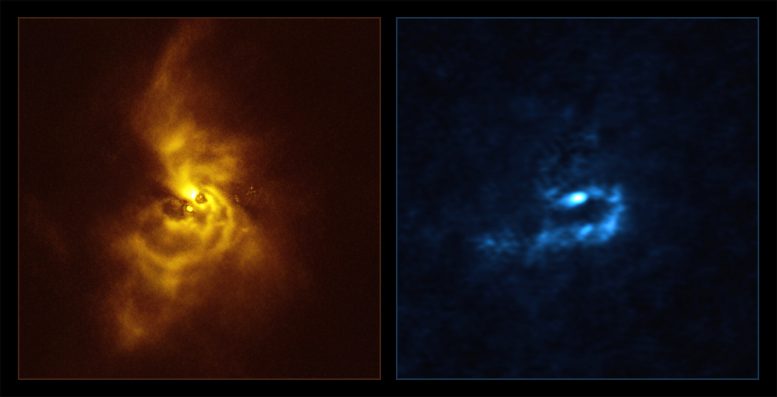
On the left-hand side in yellow is an image of the young star V960 Mon and its surrounding dusty material, taken with the Spectro-Polarimetric High-contrast Exoplanet REsearch (SPHERE) instrument installed on ESO’s Very Large Telescope (VLT). Light that is reflected off of the dusty material orbiting the star becomes polarised — meaning it oscillates in a well-defined direction rather than randomly — and is then detected by SPHERE, revealing mesmerizing spiral arms.
These findings motivated astronomers to analyze archival observations of the same system taken using ALMA. The results of this analysis can be seen on the right-hand side in blue. The wavelengths of light at which ALMA observes allow it to pierce deeper into the orbiting material, revealing that the spiral arms are fragmenting and forming clumps with masses similar to that of planets. These clumps could contract and collapse via a process known as “gravitational instability” to form giant planets.
Credit: ESO/ALMA (ESO/NAOJ/NRAO)/Weber et al.
This finding then motivated astronomers to analyze archive observations of the same system made with ALMA, in which ESO is a partner. The VLT observations probe the surface of the dusty material around the star, while ALMA can peer deeper into its structure. “With ALMA, it became apparent that the spiral arms are undergoing fragmentation, resulting in the formation of clumps with masses akin to those of planets,” says Zurlo.
Astronomers believe that giant planets form either by ‘core accretion’, when dust grains come together, or by ‘gravitational instability’, when large fragments of the material around a star contract and collapse. While researchers have previously found evidence for the first of these scenarios, support for the latter has been scant.
This video takes us on a journey to the V960 Mon star, some 5000 light-years away from Earth.
“No one had ever seen a real observation of gravitational instability happening at planetary scales — until now,” says Philipp Weber, a researcher at the University of Santiago, Chile, who led the study published on July 25 in The Astrophysical Journal Letters.
“Our group has been searching for signs of how planets form for over ten years, and we couldn’t be more thrilled about this incredible discovery,” says team-member Sebastián Pérez from the University of Santiago, Chile.
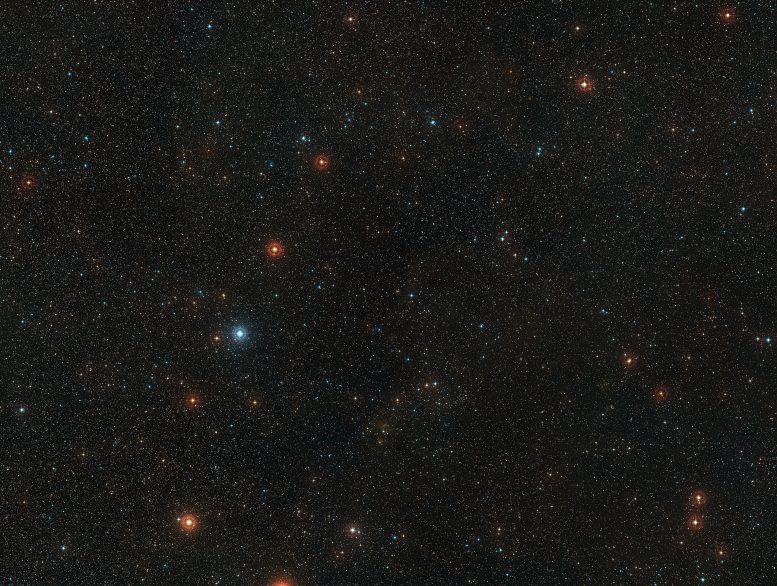
This image shows the sky around the location of the star V960 Mon. This picture was created from images in the Digitized Sky Survey 2. Credit: ESO/Digitized Sky Survey 2, Acknowledgment: Davide De Martin
ESO instruments will help astronomers unveil more details of this captivating planetary system in the making, and ESO’s Extremely Large Telescope (ELT) will play a key role. Currently, under construction in Chile’s Atacama Desert, the ELT will be able to observe the system in greater detail than ever before, collecting crucial information about it. “The ELT will enable the exploration of the chemical complexity surrounding these clumps, helping us find out more about the composition of the material from which potential planets are forming,” concludes Weber.
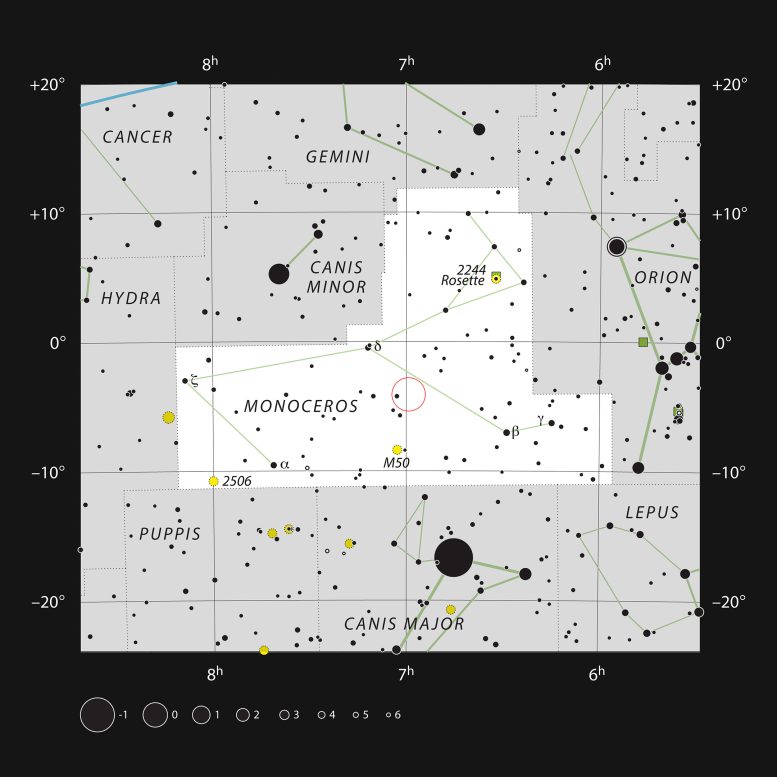
This chart shows the position of the star V960 Mon in the constellation Monoceros (meaning one-horned). The map shows most of the stars visible to the unaided eye under good conditions. Credit: ESO, IAU and Sky & Telescope
Reference: “Spirals and Clumps in V960 Mon: Signs of Planet Formation via Gravitational Instability around an FU Ori Star?” by Philipp Weber, Sebastián Pérez, Alice Zurlo, James Miley, Antonio Hales, Lucas Cieza, David Principe, Miguel Cárcamo, Antonio Garufi, Ágnes Kóspál, Michihiro Takami, Joel Kastner, Zhaohuan Zhu and Jonathan Williams, 25 July 2023, The Astrophysical Journal Letters.
DOI: 10.3847/2041-8213/ace186
The team behind this work comprises young researchers from diverse Chilean universities and institutes, under the Millennium Nucleus on Young Exoplanets and their Moons (YEMS) research center, funded by the Chilean National Agency for Research and Development (ANID) and its Millennium Science Initiative Program. The two facilities used, ALMA and VLT, are located in Chile’s Atacama Desert.
Aerial views of the Atacama Large Millimeter/submillimeter Array (ALMA) and the Chajnantor plateau in the Chilean Andes, taken in November 2022.
The team is composed of P. Weber (Departamento de Física, Universidad de Santiago de Chile, Chile [USACH]; Millennium Nucleus on Young Exoplanets and their Moons, Chile [YEMS]; Center for Interdisciplinary Research in Astrophysics and Space Exploration, Universidad de Santiago de Chile, Chile [CIRAS]), S. Pérez (USACH; YEMS; CIRAS), A. Zurlo (YEMS; Núcleo de Astronomía, Universidad Diego Portales Chile [UDP]; Escuela de Ingeniería Industrial, Universidad Diego Portales, Chile), J. Miley (Joint ALMA Observatory, Chile; National Astronomical Observatory of Japan, Japan), A. Hales (National Radio Astronomy Observatory, USA), L. Cieza (YEMS; UDP), D. Principe (MIT Kavli Institute for Astrophysics and Space Research, USA), M. Cárcamo (YEMS; CIRAS; USACH, Faculty of Engineering, Computer Engineering Department, Chile), A. Garufi (INAF, Osservatorio Astrofisico di Arcetri, Italy), Á. Kóspál (Konkoly Observatory, Research Centre for Astronomy and Earth Sciences, Eötvös Loránd Research Network (ELKH), Hungary; CSFK, MTA Centre of Excellence, Hungary; ELTE Eötvös Loránd University, Institute of Physics, Hungary; Max Planck Institute for Astronomy, Germany), M. Takami (Institute of Astronomy and Astrophysics, Academia Sinica, Taiwan, ROC), J. Kastner (School of Physics & Astronomy, Rochester Institute of Technology, USA), Z. Zhu (Department of Physics and Astronomy, University of Nevada, USA; Nevada Center for Astrophysics, University of Nevada, USA), and J. Williams (Institute for Astronomy, University of Hawai‘i at Manoa, USA).

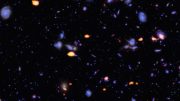
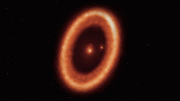

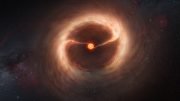
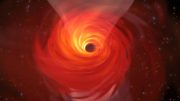
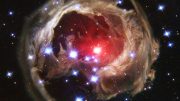

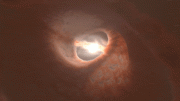
Be the first to comment on "The Genesis of Jupiters: Incredible New Image Reveals Secrets of Planet Birth"